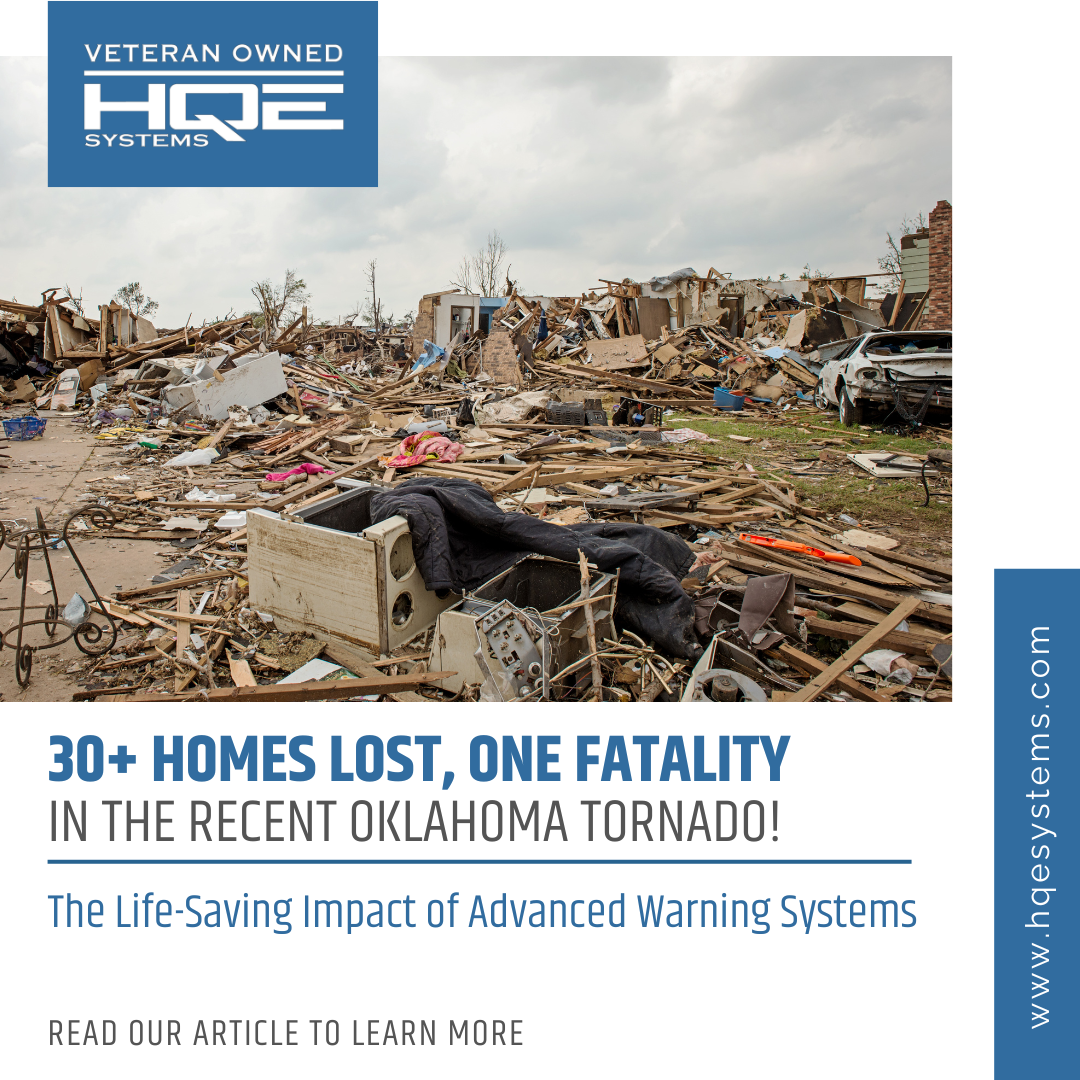Second Strike: Tornado Destroys 30 Homes in Oklahoma
In the heart of Oklahoma, the skies have darkened again, unleashing nature’s fury with another devastating tornado—the second significant storm to strike the state in just two months. According to Yale Climate Connections, this recent disaster highlights the urgent need for enhanced disaster preparedness. With at least 30 homes destroyed and tragically at least one fatality, the impact is palpable. These recurring disasters are not just altering the physical landscape but are also deeply affecting the spirits of the community members. This story delves into the traumatic impact of these events and emphasizes the critical role of cutting-edge technology in preventing future tragedies, drawing the reader into a narrative woven with urgency and a call for action. For more details on the recent events in Oklahoma, visit Yale Climate Connections.
Tornadoes in Oklahoma: A Recurrent Nightmare
In Oklahoma, nestled within the expansive Great Plains, the small town of Barnsdall has once again been marked by the ferocity of nature. On May 6, 2024, this town of about 1,000 people experienced its second significant tornado of the year, creating scenes of widespread devastation that have become all too familiar for its residents. Bob Henson from Yale Climate Connections reports that aerial imagery from the following morning captured the harsh reality: a landscape littered with debris and the foundational remnants of homes torn asunder.
Earlier in the year, on April 1, Barnsdall was struck by an EF1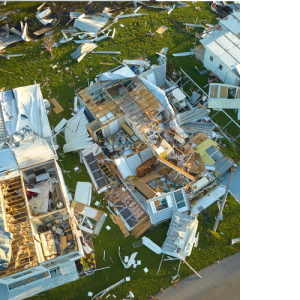 tornado, which disrupted dozens of structures. However, the more recent tornado proved even more destructive. The Oklahoma Highway Patrol indicated that 30 to 40 homes were damaged or destroyed in this latest event. The severity of the storm prompted a thorough investigation by the National Weather Service (NWS), which initially reported EF3 damage southwest of Barnsdall. As the NWS teams continued their surveys, the damage was later upgraded, revealing EF4-level destruction in areas, highlighting the tornado’s devastating impact on this small community.
tornado, which disrupted dozens of structures. However, the more recent tornado proved even more destructive. The Oklahoma Highway Patrol indicated that 30 to 40 homes were damaged or destroyed in this latest event. The severity of the storm prompted a thorough investigation by the National Weather Service (NWS), which initially reported EF3 damage southwest of Barnsdall. As the NWS teams continued their surveys, the damage was later upgraded, revealing EF4-level destruction in areas, highlighting the tornado’s devastating impact on this small community.
This series of tornadoes is part of a broader pattern of severe weather affecting the Southern Plains. Despite the extreme instability and strong wind shear anticipated on May 6, which often lead to the formation of intense tornadic circulations, many of the day’s severe thunderstorms developed along a line extending from eastern Kansas into Oklahoma. This line-based formation, rather than isolated supercell storms, somewhat limited the overall intensity of tornadoes, except for notable exceptions like the Barnsdall tornado. This tornado notably emerged from one of the few intense storms that day, which initially developed well ahead of the main line of storms, intensifying its impact when it hit.
According to the NOAA/NWS Storm Prediction Center, while May 6 saw a modest total of 19 tornado reports, the severe weather conditions led to 207 reports of severe wind and 77 reports of severe hail across the region, making it the most active day of 2024 so far in terms of severe weather incidents. The widespread damage and disruption caused by these storms underline the unpredictable nature and the escalating threat posed by severe weather in this region.
The forecast remained grim, with the potential for more severe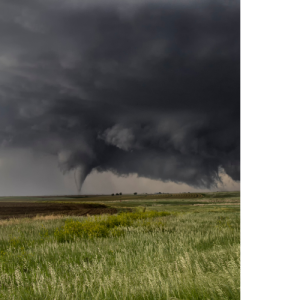 storms and possibly strong tornadoes through the midweek, particularly across parts of the Corn Belt, Ohio Valley, mid-Mississippi Valley, and Tennessee Valley. The weather patterns indicated continued risks as a sprawling upper low and associated surface front persisted across the Great Plains and Midwest. By Wednesday, the severe weather had resulted in at least 21 tornado reports, most notably in southern Michigan where the state’s first-ever tornado emergency was declared, affecting cities like Portage where significant damage was reported.
storms and possibly strong tornadoes through the midweek, particularly across parts of the Corn Belt, Ohio Valley, mid-Mississippi Valley, and Tennessee Valley. The weather patterns indicated continued risks as a sprawling upper low and associated surface front persisted across the Great Plains and Midwest. By Wednesday, the severe weather had resulted in at least 21 tornado reports, most notably in southern Michigan where the state’s first-ever tornado emergency was declared, affecting cities like Portage where significant damage was reported.
The resilience of communities like Barnsdall is being constantly tested by these repeated and severe weather events. Local emergency response teams and residents have become adept at navigating the challenges posed by tornadoes, quickly mobilizing recovery efforts and supporting each other in the aftermath. The shared experiences of loss and reconstruction have forged strong bonds among community members, who rely on each other to rebuild and recover from each disaster.
These events underscore a troubling trend observed across the Midwest and Southern Plains: an increase in frequency and intensity of severe weather events, which experts link to broader climatic shifts. Communities like Barnsdall are on the frontline of these changes, facing repeated disruptions that test their resilience and adaptive capacities.
The continuous monitoring and updates by meteorologists and the NWS are crucial in providing timely warnings and assessments that help mitigate the impact of such severe weather events. This ongoing situation calls for enhanced preparedness and stronger community resilience strategies to manage the challenges posed by an increasingly volatile climate. For more detailed coverage and future updates, keep an eye on reports from Yale Climate Connections and CBS News for additional insights and perspectives.
The Role of Advanced Warning and Response Systems
In the realm of severe weather events, the efficacy of warning systems can mean the difference between safety and catastrophe. Current warning systems primarily rely on a network of Doppler radars, satellite imagery, weather stations, and emergency broadcasting systems to monitor and communicate the threat of imminent weather hazards.
Current Warning Systems
The backbone of today’s weather forecasting and alert system is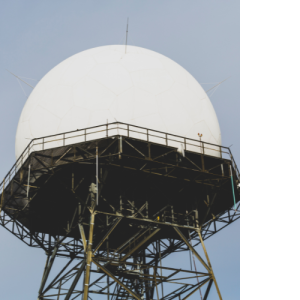 the network of Doppler radars operated by the National Weather Service (NWS). These radars detect weather conditions by emitting beams of electromagnetic waves and observing the reflection of these waves off precipitation and other atmospheric particles. The data collected is used to assess storm structure, intensity, and potential impact. This information is then disseminated through various channels, including TV, radio, and internet-based notifications, providing the public and emergency services with timely updates.
the network of Doppler radars operated by the National Weather Service (NWS). These radars detect weather conditions by emitting beams of electromagnetic waves and observing the reflection of these waves off precipitation and other atmospheric particles. The data collected is used to assess storm structure, intensity, and potential impact. This information is then disseminated through various channels, including TV, radio, and internet-based notifications, providing the public and emergency services with timely updates.
Alongside these, the Integrated Public Alert and Warning System (IPAWS) plays a crucial role in ensuring that emergency alerts reach a broad audience via multiple pathways such as wireless emergency alerts (WEA), which send messages to mobile phones similar to a text message.
Advancements in Technology
However, as technology advances, so too does the potential for more sophisticated warning systems. The introduction of artificial intelligence and machine learning into meteorological practices offers the promise of faster and more accurate weather predictions. AI can analyze vast datasets more quickly than human forecasters, recognizing patterns that may indicate severe weather earlier than traditional methods.
For instance, AI-driven models could predict the formation and trajectory of tornadoes with greater precision, giving residents in the path of the storm additional time to seek shelter. These systems could also personalize alerts based on an individual’s location and proximity to the threat, enhancing the relevance and urgency of the warnings.
Potential Benefits of Enhanced Systems
The primary benefit of faster and more accurate warning systems is the potential reduction in injury and loss of life. Enhanced lead times increase the likelihood of effective evacuations and allow for better preparation by emergency services. Additionally, these advanced systems can help reduce economic losses by providing businesses and farmers with more time to secure assets and livestock against impending storms.
Moreover, with more precise forecasts, false alarm rates could decrease, potentially leading to greater public trust and responsiveness to alerts. This aspect is crucial because warning fatigue—where people begin to ignore alerts due to frequent false alarms—can severely undermine the effectiveness of emergency management systems.
Integration of Emergency Management Tools
Enhancing the benefits of these advanced technologies requires seamless integration with existing emergency management protocols and tools. For example, integrating AI-driven weather prediction models with emergency broadcasting systems and first responder networks can ensure that all parts of the emergency management ecosystem are operating from the most current and accurate information.
seamless integration with existing emergency management protocols and tools. For example, integrating AI-driven weather prediction models with emergency broadcasting systems and first responder networks can ensure that all parts of the emergency management ecosystem are operating from the most current and accurate information.
This integration also involves training for emergency personnel in the use of new technologies and updating evacuation protocols to adapt to the improved lead times and accuracy. Public education campaigns are essential to inform communities about the changes and improvements in warning systems, ensuring that residents know how to respond appropriately to alerts.
Conclusion
The development and integration of more advanced warning and response systems hold significant promise for mitigating the impacts of severe weather events. By harnessing newer technologies, such as AI and machine learning, meteorologists and emergency managers can provide faster, more accurate warnings that save lives and protect property. As these technologies continue to evolve, the integration of these tools across different platforms and protocols will be crucial in shaping a resilient response framework capable of confronting the unpredictable nature of severe weather.
Introducing HQE Systems: A Beacon of Hope
HQE Systems stands at the forefront of emergency management and life safety technologies, providing innovative solutions designed to enhance community safety and preparedness in the face of natural disasters, particularly tornadoes. As severe weather events become more frequent and intense due to climate change, the role of advanced warning and response systems like those offered by HQE Systems becomes increasingly crucial.
HQE Systems’ Role in Emergency Management
HQE Systems specializes in a range of products that cater to emergency management needs, with a focus on real-time alerting and communication technologies. Their offerings include advanced outdoor warning sirens and a state-of-the-art alert software known as SiSA (Smart Alert Software). These technologies are designed to integrate seamlessly into existing emergency management infrastructures, providing communities with the tools needed to respond effectively to imminent threats.
Outdoor Warning Sirens
The Outdoor Warning Sirens from HQE Systems are engineered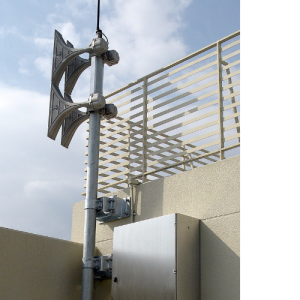 for robust performance and reliability, crucial for timely alerts in areas prone to tornadoes. These sirens are strategically installed in communities to ensure maximum coverage and audibility. When a tornado warning is issued, the sirens emit loud, penetrating tones that are designed to be heard over a wide area, alerting residents to seek immediate shelter. The sirens’ effectiveness is enhanced by their ability to operate even during power outages, thanks to independent power sources such as solar panels or backup batteries.
for robust performance and reliability, crucial for timely alerts in areas prone to tornadoes. These sirens are strategically installed in communities to ensure maximum coverage and audibility. When a tornado warning is issued, the sirens emit loud, penetrating tones that are designed to be heard over a wide area, alerting residents to seek immediate shelter. The sirens’ effectiveness is enhanced by their ability to operate even during power outages, thanks to independent power sources such as solar panels or backup batteries.
SiSA: Smart Alert Software
SiSA, HQE Systems’ Smart Alert Software, represents a significant advancement in emergency communication technology. This software platform integrates with local meteorological data and emergency management systems to provide real-time, accurate alerts to the public. SiSA uses sophisticated algorithms to analyze weather patterns and predict the likelihood of a tornado or other severe weather events. Once a threat is identified, SiSA facilitates the rapid dissemination of alerts through multiple channels, including text messages, emails, and app notifications, ensuring that residents receive timely warnings no matter where they are.
Benefits of HQE Systems Technologies
The combination of Outdoor Warning Sirens and SiSA offers multiple benefits in emergency situations:
- Enhanced Preparedness: With the advanced warning capabilities of SiSA, residents can receive alerts with enough lead time to take necessary safety precautions or evacuate if needed, significantly reducing the risk of casualties.
- Widespread Reach: The Outdoor Warning Sirens ensure that even those not connected to digital alert systems or outside the reach of cell service can be alerted to impending danger.
- Community Resilience: The integration of these systems into community safety plans enhances overall resilience against tornadoes and other severe weather events, helping communities to recover more quickly following disasters.
- Continuous Operation: The resilience of the Outdoor Warning Sirens, with their independent power sources, ensures that they remain operational even when most needed—during power outages that can accompany severe storms.

Deepening Community Engagement and Education
Beyond their technological contributions, HQE Systems also emphasizes community engagement and education as crucial components of emergency management. By conducting workshops, seminars, and drills, they help educate the public on how to effectively respond to emergency alerts. These educational efforts complement the technological tools by ensuring that community members are not only aware but also prepared to act on the alerts they receive.
Conclusion
HQE Systems’ dedication to advancing emergency management technology with products like Outdoor Warning Sirens and SiSA Smart Alert Software is transforming how communities respond to natural disasters. By providing reliable, timely, and effective warning systems, HQE Systems not only enhances public safety but also contributes to the broader goal of building disaster-resilient communities. As the threat landscape evolves, the role of such innovative technologies will only grow, underlining the importance of continuous investment and innovation in the field of emergency management.
How HQE Systems Could Have Made a Difference
In the aftermath of the recent tornadoes in Oklahoma, the role of advanced warning systems like those developed by HQE Systems comes into sharp focus. Given the devastation caused, including the loss of over 30 homes and at least one fatality, the deployment of HQE Systems’ technologies could have significantly altered the outcomes through enhanced early warning capabilities and efficient communication.
Potential Impacts of HQE Systems’ Technologies
HQE Systems specializes in high-tech solutions that are designed to enhance emergency responses and improve public safety during severe weather events. One of their key products, the Outdoor Warning Sirens, could have been crucial in the recent Oklahoma tornadoes. These sirens are designed to emit loud and far-reaching tones that alert entire communities to impending danger, ensuring that even those who may not have immediate access to digital communication channels receive timely warnings.
Additionally, HQE Systems’ SiSA (Smart Alert Software) could have played a critical role by integrating real-time meteorological data with predictive algorithms to issue early warnings. SiSA’s capability to analyze weather patterns and promptly alert residents through multiple channels—including mobile notifications, emails, and local siren systems—ensures comprehensive coverage and swift action.
Enhancing Emergency Response with Timely Alerts
The importance of timely alerts in tornado scenarios cannot be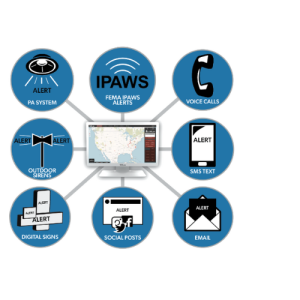 over stated. With the enhanced lead time provided by SiSA, residents would have had more time to seek shelter or evacuate dangerous areas. This advanced notice is vital not only for personal safety but also for community preparedness, allowing emergency services to position resources strategically and respond more effectively to the areas in greatest need.
over stated. With the enhanced lead time provided by SiSA, residents would have had more time to seek shelter or evacuate dangerous areas. This advanced notice is vital not only for personal safety but also for community preparedness, allowing emergency services to position resources strategically and respond more effectively to the areas in greatest need.
Moreover, the integration of SiSA with existing emergency management systems could streamline the communication process between different response teams. By providing a unified platform for data exchange and alerts, HQE Systems ensures that all teams—from local first responders to state emergency management offices—are on the same page, which is crucial during the chaotic moments following a tornado warning.
Specific Features Benefiting Emergency Response
HQE Systems’ technologies come equipped with features specifically designed to withstand the challenges posed by severe weather events. For instance, their Outdoor Warning Sirens are built to function independently of local power grids, using solar panels or backup batteries to maintain operability even during power outages—a common occurrence during tornadoes.
Furthermore, the adaptability of SiSA to local conditions allows for customized alert protocols based on the specific needs and geographical features of an area, enhancing the relevance and effectiveness of the warnings issued. This tailored approach ensures that warnings are not just broadcasted but are meaningful and actionable, increasing the likelihood of a timely public response.
Conclusion
The integration of HQE Systems’ advanced warning technologies could have provided a significant advantage in the recent Oklahoma tornado incidents. By offering early, reliable, and widespread alerts, these systems have the potential to drastically reduce both human and material losses in such disasters. As communities look to rebuild and enhance their resilience against future tornadoes, adopting cutting-edge technologies like those offered by HQE Systems will be crucial in safeguarding lives and properties.
Looking Forward: Integration of Life Safety Technology in Disaster-Prone Areas
In an era where severe weather events are becoming more frequent and intense, the integration of advanced life safety technologies in disaster-prone regions is not merely an option—it is a critical necessity. The right technology can significantly boost community resilience and safety, making a profound difference in how effectively these communities can respond to and recover from natural disasters like tornadoes.
The Necessity of Advanced Technologies in Disaster-Prone Regions
Incorporating advanced technologies such as early warning systems and emergency communication tools is vital for enhancing disaster preparedness. Companies like HQE Systems are at the forefront, developing sophisticated solutions that enable faster, more accurate forecasts and alerts. These systems use a combination of AI, machine learning, and real-time data analytics to provide early warnings that can be crucial for saving lives and minimizing property damage during severe weather events. The predictive capabilities of these technologies allow for proactive, rather than reactive, responses to emerging threats.
Broader Implications for Community Safety and Resilience
Beyond immediate response capabilities, advanced technologies foster long-term resilience. They enhance the robustness of communication networks, ensuring that vital information reaches every segment of the community efficiently and without delay. This is particularly important for ensuring that vulnerable populations, who might lack access to traditional information channels, receive timely and actionable warnings. Additionally, the data collected before, during, and after events can be invaluable for refining future response strategies and urban planning, helping to build smarter, more resilient infrastructures.
Call to Action for Decision-Makers and Emergency Managers
For decision-makers and emergency managers, the call to action is clear: prioritize the integration of advanced technologies into safety protocols. This includes not only securing the necessary funding but also fostering collaborations between governments, technology providers like HQE Systems, and community organizations to ensure that these tools are effectively integrated and managed. Such strategic investments in technology will pay dividends in enhanced safety and, ultimately, more resilient communities.
Conclusion
The critical role of technological advancement in managing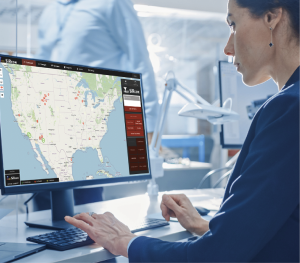 natural disasters cannot be overstated. With the challenges posed by an increasingly volatile climate, the deployment of sophisticated systems like those from HQE Systems is essential. These technologies are pivotal in not only managing the immediate impacts of disasters but also in ensuring that communities can thrive in the face of such challenges. As we look to the future, the promise of these innovations offers a beacon of hope, heralding a new era in which technology and preparedness converge to create safer, more resilient communities ready to face whatever challenges come their way. By embracing these technological solutions, we can transform our approach to disaster management, ensuring that communities are not only prepared to handle the worst but also equipped to recover and rebuild swiftly in the aftermath.
natural disasters cannot be overstated. With the challenges posed by an increasingly volatile climate, the deployment of sophisticated systems like those from HQE Systems is essential. These technologies are pivotal in not only managing the immediate impacts of disasters but also in ensuring that communities can thrive in the face of such challenges. As we look to the future, the promise of these innovations offers a beacon of hope, heralding a new era in which technology and preparedness converge to create safer, more resilient communities ready to face whatever challenges come their way. By embracing these technological solutions, we can transform our approach to disaster management, ensuring that communities are not only prepared to handle the worst but also equipped to recover and rebuild swiftly in the aftermath.
HQE Systems is a certified Veteran Owned Company. For more information about HQE Systems Inc. and its emergency management, electronic security, and integration solutions, please visit www.hqesystems.com.

Contact: David Ditto (Early Warning Systems Subject Matter Expert)
Email: David.Ditto@hqesystems.com
Phone Number: (843) 872-7020
____________________
HQE Systems, Inc. | HQE is a Minority-Owned Service Disabled Veteran Owned Small Business (SDVOSB) providing full solutions for: Mass Notification Systems, Electronic Security Systems, Software Development Services, Contract Support, and Prototyping Services. As a brand-agnostic solutions provider, HQE prides itself in providing the BEST solution for the project. HQE possesses over 30+ factory certifications and reseller licenses to ensure our clients receive the highest quality service at the ideal budget. HQE can provide full design, installation, integrations, upgrades, and long-term maintenance support for any size and scope project.

